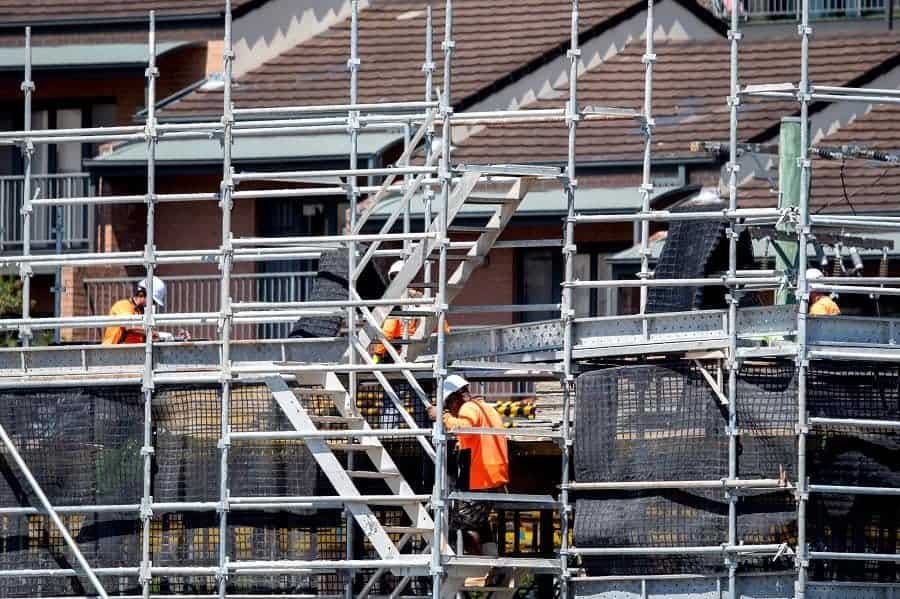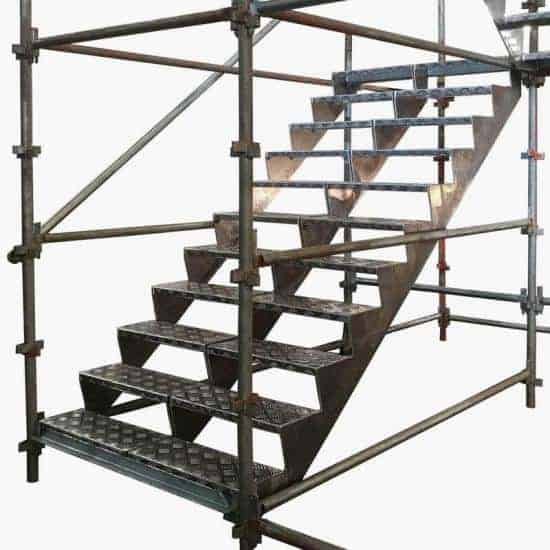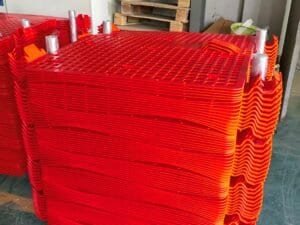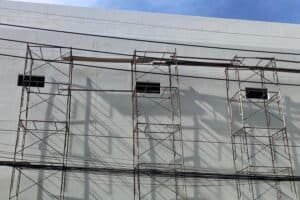مقدمة
تعتبر السلالم مهمة للوصول الآمن إلى مناطق العمل المرتفعة في البناء. فهي تساعد العمال على التنقل بين المستويات بسهولة وأمان. إن معرفة الأنواع المختلفة من سلالم السقالة يمكن أن تساعدك في اختيار أفضلها لمشروعك.
هناك أربعة أنواع رئيسية من سلالم السقالة: سلالم نقالة، ومتحركة، وسلالم أساسية، وألومنيوم. ولكل نوع ميزات تناسب مهام مختلفة. على سبيل المثال، تظل سلالم نقالة في مكانها للوصول المنتظم. ويمكن تحريك السلالم المتحركة بسهولة. والسلالم الأساسية بسيطة ورخيصة التركيب. أما سلالم الألومنيوم فهي خفيفة الوزن ولكنها قوية.
يؤدي اختيار سلالم السقالة المناسبة إلى تعزيز السلامة والكفاءة. يتيح لك فهم خياراتك إنشاء موقع عمل أكثر أمانًا وتلبية احتياجات مشروعك.
سلالم سقالة نقالة
سلالم السقالة المتحركة هي خيار شائع في مواقع البناء. وهي مصممة لتوفير وصول آمن وموثوق به إلى المناطق المرتفعة ويتم ربطها مباشرة بهيكل السقالة، مما يضمن الاستقرار والقوة.
الميزة الرئيسية لسلالم السقالة المتحركة هي تصميمها الثابت. بمجرد تركيبها، تظل في مكانها، مما يسمح للعمال بالتحرك بسهولة بين المستويات المختلفة. هذا الهيكل الثابت يجعلها مثالية للمشاريع التي تتطلب الوصول المنتظم.
تتكون سلالم النقالات عادة من دعامات وأعمدة. الدعامات هي الجوانب الطويلة التي تدعم السلالم، والدعامات هي الدرجات المسطحة التي يضع عليها العمال أقدامهم. هذا المزيج يخلق طريقة قوية وآمنة للتنقل عبر السقالات.
من أهم مميزات سلالم السقالة المتحركة هي متانتها. فهي غالبًا ما تكون مصنوعة من مواد قوية مثل الفولاذ أو الخشب. وهذا يضمن قدرتها على تحمل الأحمال الثقيلة ومقاومة التآكل والتلف بمرور الوقت. كما أنها تتوافق مع معايير السلامة، وهو أمر بالغ الأهمية في مواقع البناء.
إن تركيب سلالم السقالة المتحركة أمر بسيط. حيث يمكن للعمال تركيبها بسرعة، مما يوفر الوقت في العمل. وبمجرد تركيبها، توفر نقطة وصول موثوقة تعمل على تحسين سير العمل والسلامة.
تُعد هذه السلالم الأفضل للمشروعات التي تتطلب حركة متكررة بين المستويات، مثل مواقع البناء الكبيرة أو أعمال التجديد. فهي تسمح للعمال بحمل الأدوات والمواد بسهولة، مما يعزز الإنتاجية.
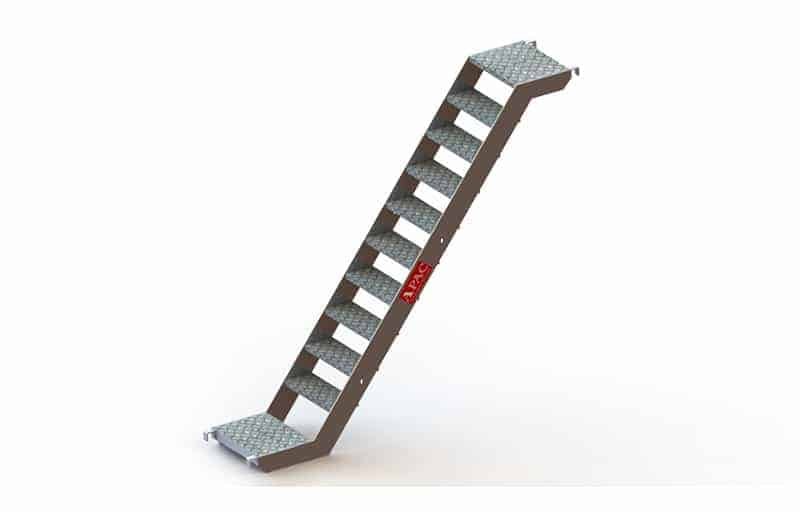
سلالم السقالة الأساسية
تعتبر سلالم السقالة الأساسية بسيطة ولكنها فعالة للوصول إلى مناطق العمل المرتفعة. وهي تتكون من درجات متصلة مباشرة بإطار السقالة. وهذا التصميم البسيط يجعلها سهلة التركيب والاستخدام.
من أهم فوائد سلالم السقالة الأساسية انخفاض تكلفتها. فهي غالبًا ما تكون أرخص من سلالم السقالة الأخرى، مما يجعلها خيارًا رائعًا للمشاريع التي تناسب الميزانية. وعلى الرغم من انخفاض سعرها، إلا أنها لا تزال تلبي معايير السلامة لحماية العمال.
يمكن تصنيع هذه السلالم من مواد مختلفة، مثل الخشب والمعادن. يمنح الخشب مظهرًا كلاسيكيًا، بينما يوفر المعدن القوة والمتانة. ويمكن لكلا المادتين تحمل الأحمال الثقيلة، وهو أمر بالغ الأهمية في مواقع العمل المزدحمة.
إن تركيب سلالم السقالة الأساسية سريع وسهل. ويمكن للعمال تجميعها بسرعة، مما يسمح بالوصول السريع إلى المناطق المرتفعة. تساعد هذه السرعة في الحفاظ على الإنتاجية عالية في موقع العمل.
تعتبر سلالم السقالة الأساسية مثالية للمشاريع قصيرة المدى حيث لا يلزم الوصول إليها إلا بشكل مؤقت. تُستخدم عادةً في أعمال تجديد المنازل والطلاء والصيانة.
رغم أنها قد لا تكون مرنة مثل السلالم المتحركة أو سلالم النقالات، إلا أن سلالم السقالة الأساسية لا تزال تعمل بشكل جيد. فهي توفر طريقة موثوقة للوصول إلى ارتفاعات مختلفة، مما يسمح للعمال بحمل الأدوات والمواد بأمان.

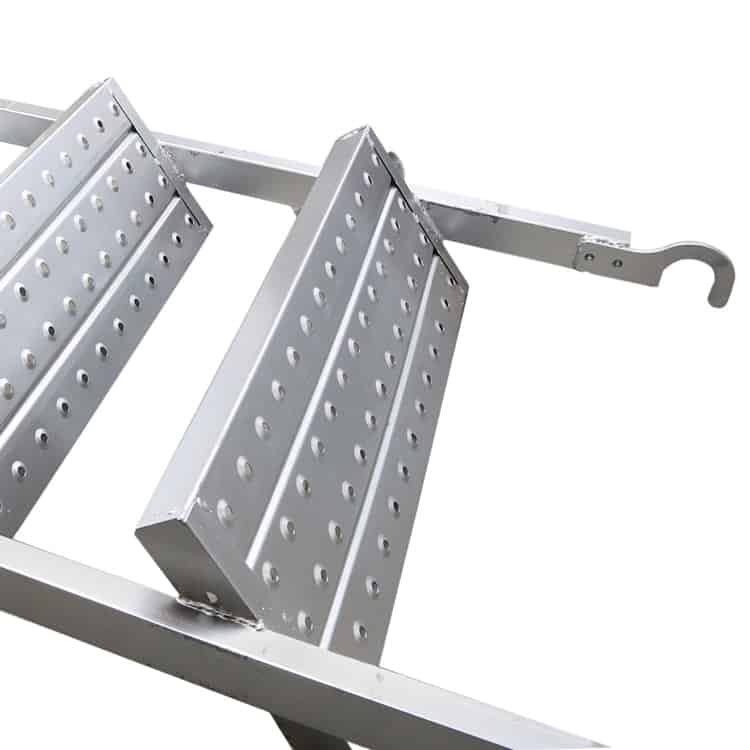
سلالم سقالة من الألومنيوم
تُعد سلالم السقالة المصنوعة من الألومنيوم خيارًا شائعًا في البناء لأنها خفيفة الوزن وقوية. توفر هذه السلالم طريقة آمنة للوصول إلى مناطق العمل المرتفعة مع سهولة التعامل معها.
من أهم فوائد سلالم السقالة المصنوعة من الألومنيوم خفة وزنها. وهذا يجعلها سهلة النقل والتركيب، مما يسمح للعمال بنقلها بسهولة في جميع أنحاء موقع العمل. وعلى الرغم من أنها خفيفة الوزن، فإن سلالم الألومنيوم قوية بما يكفي لتحمل الأحمال الثقيلة.
من المزايا الأخرى أن سلالم السقالة المصنوعة من الألومنيوم تقاوم التآكل. وهذا يجعلها رائعة للاستخدام في الهواء الطلق، وخاصة في الظروف الرطبة أو الرطبة. فهي لا تصدأ، مما يساعد في الحفاظ عليها آمنة وطويلة الأمد.
إن تركيب سلالم السقالة المصنوعة من الألومنيوم أمر سريع وسهل. حيث يمكن للعمال تجميعها في بضع دقائق فقط، مما يزيد من الكفاءة. وعادةً ما يتضمن التصميم مداسات غير قابلة للانزلاق، مما يجعل الصعود والنزول أكثر أمانًا.
هذه السلالم مثالية للعديد من المهام، بما في ذلك الطلاء والأعمال الكهربائية والصيانة. تصميمها خفيف الوزن يسمح بسهولة الحركة بين المواقع في موقع العمل.
مميزات سلالم السقالة
توفر سلالم السقالات العديد من المزايا لأعمال البناء. أولاً، تزيد من السلامة في مواقع العمل. يمكن للعمال التنقل بين المستويات دون السقوط بفضل الدرجات الصلبة والدرابزين الآمن.
ومن بين الفوائد الأخرى تحسين الكفاءة. حيث توفر سلالم السقالة سهولة الوصول إلى المناطق المرتفعة، مما يسمح للعمال بحمل الأدوات والمواد صعودًا وهبوطًا. ويوفر هذا الوصول السريع الوقت ويعزز الإنتاجية.
التكلفة هي ميزة أخرى. غالبًا ما تكون سلالم السقالة الأساسية أكثر تكلفة من الخيارات الأخرى. فهي توفر حل وصول موثوقًا به دون إرهاق الميزانية.
أخيرًا، تساعد سلالم السقالة في تلبية لوائح السلامة. ويضمن اتباع معايير إدارة السلامة والصحة المهنية سلامة العمال أثناء العمل.
خاتمة
يؤدي استخدام سلالم السقالة المناسبة إلى تحسين السلامة والكفاءة في موقع العمل. فهي تسمح للعمال بالتحرك بسرعة بين المستويات أثناء حمل الأدوات والمواد. يساعد اختيار أفضل سلالم السقالة فرق البناء على العمل بشكل أفضل وأكثر أمانًا. يؤتي الاستثمار في حلول السقالات عالية الجودة ثماره من خلال تعزيز السلامة والإنتاجية.


